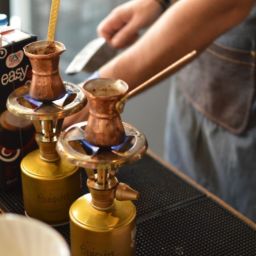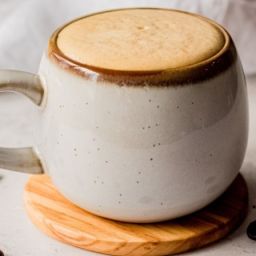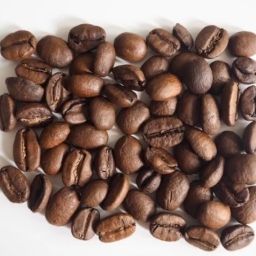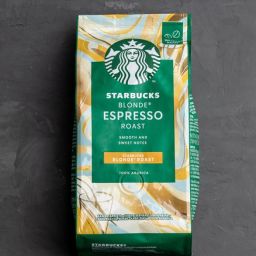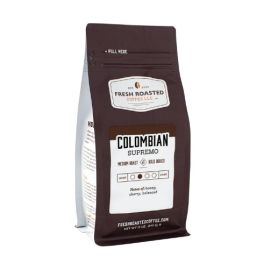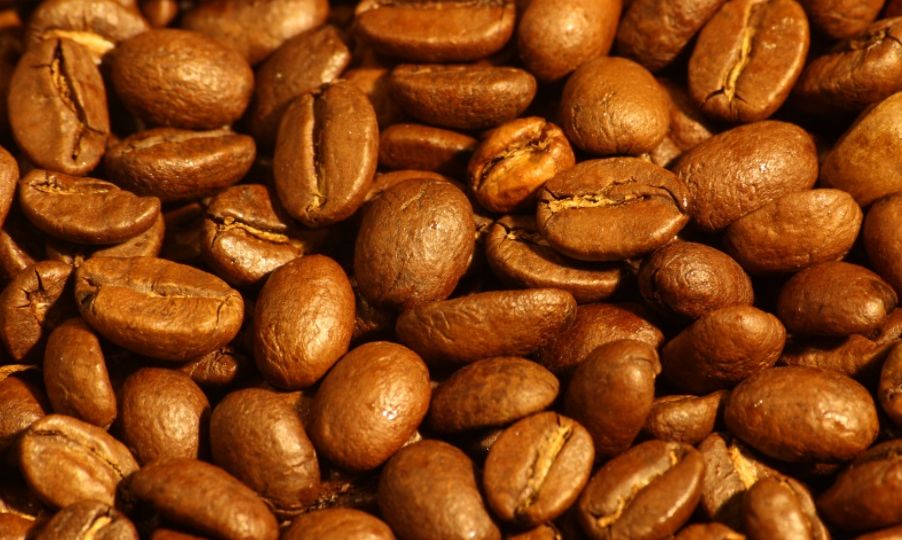
Light roast coffee stands out due to its unique brewing qualities, offering a higher acidity and more pronounced flavors than its darker counterparts. Unlike dark roasts, which are roasted longer to achieve a richer, more bitter taste, light roasts are stopped just as the beans begin to crack. This method preserves the bright, delicate flavors inherent in the beans.
The beans themselves are light brown and lack the oily sheen found in darker roasts. This difference in appearance reflects in the flavor too—light roasts typically exhibit a vibrant, complex taste profile and retain more caffeine due to their shorter roasting process.
Key Takeaways for Brewing Light Roast Coffee
- Importance of Bean Selection and Grind Size:
Choosing the right light roast coffee beans is crucial, as is selecting the appropriate grind size for your brewing method. Light roasts benefit from a grind that matches the method, whether it’s fine for espresso or medium for standard drip coffee. - Ideal Water Temperature and Brewing Methods:
The perfect cup of light roast coffee comes from paying close attention to water temperature and choosing the right brewing technique. Typically, slightly cooler water (around 195°F to 205°F) is ideal to avoid over-extraction, which can bring out unwanted bitterness. - Expected Flavor Profiles and Caffeine Content:
Expect a cup of light roast coffee to deliver a burst of acidity with complex, flavorful notes that can range from floral to fruity. Due to less roasting time, light roasts also pack more caffeine compared to darker roasts, giving you a bigger buzz per sip.
Selecting the Best Light Roast Beans
When choosing light roast beans, origin is key. Ethiopian Yirgacheffe and Costa Rican Tarrazu are among the most popular due to their distinct flavor profiles. Ethiopian Yirgacheffe is celebrated for its bright acidity and complex combination of floral and fruity notes, often with a hint of citrus or berry. Costa Rican Tarrazu, on the other hand, tends to have a more balanced flavor with hints of chocolate and citrus, making it ideal for light roasting which accentuates these intricate flavors.
When shopping for light roast coffee beans, look for beans that are uniform in color and size. This consistency is a good indicator of quality and proper roasting. The beans should have a matte finish, without the oily sheen characteristic of darker roasts. Sniffing the beans can also guide you; you’re looking for vibrant, fresh aromas. If the beans smell musty or like cardboard, they’re probably stale.
Mastering the Grind and Preparation
The grind size for light roast coffee is crucial because it influences extraction during brewing. A finer grind is typically used for methods like espresso, where water contacts the grounds briefly, extracting flavor quickly. For drip coffee makers, a medium grind works best, providing a balance between flavor extraction and filtration.
Here’s a simple guide to preparing your light roast coffee:
- Measure Your Coffee: Start with about 1 to 2 tablespoons of coffee for every 6 ounces of water, adjusting to taste.
- Grind the Beans: Right before brewing, grind your beans to the appropriate coarseness for your brewing method.
- Boil Water: Heat your water to just below boiling, between 195°F and 205°F.
- Brew: Pour the water over the coffee grounds, ensuring even saturation for optimal flavor extraction.
- Enjoy: After brewing, serve the coffee immediately to capture the most flavor.
Brewing Methods for Light Roast Coffee
Brewing light roast coffee can be a delightful exploration of flavor, especially when you match the coffee with the right brewing method. Here are four popular methods—pour-over, French press, AeroPress, and cold brew—and tips on how to optimize each for light roast coffee.
Pour-Over
Pour-over is ideal for light roasts due to its ability to highlight intricate flavor profiles. Here’s how to do it:
- Heat Water: Bring water to just below boiling (about 205°F).
- Grind Coffee: Use a medium-fine grind; it should look like table salt.
- Set Up Your Pour-Over: Place a filter in the dripper and pre-wet it to remove paper taste.
- Brew: Pour a small amount of water over the grounds to let them “bloom” for 30 seconds, then continue pouring slowly in a circular motion.
- Enjoy: Allow the coffee to drip through completely, then serve.
This method accentuates the bright, fruity notes of light roast coffee.
French Press
The French press method is great for a fuller-bodied cup:
- Heat Water: Boil water and let it cool to about 200°F.
- Coarse Grind: Your coffee grounds should resemble coarse breadcrumbs.
- Add Coffee to Press: Use about 1 ounce of coffee for every 4 ounces of water.
- Brew: Pour water over the grounds, stir slightly, and let steep for 4 minutes.
- Press and Serve: Slowly push down the plunger and pour into your cup.
This method allows for more oils and a richer body, which can add depth to the light roast’s flavor.
AeroPress
AeroPress makes a smooth and strong cup of coffee, emphasizing the nuanced flavors:
- Heat Water: Bring water to 205°F.
- Fine Grind: Grind your coffee slightly finer than table salt.
- Assemble AeroPress: Place a filter in the cap, attach it to the chamber, and place it over your cup.
- Brew: Add coffee and water, stir, and steep for about 2 minutes before pressing down the plunger.
- Enjoy: Press the plunger down slowly and enjoy a clean, flavorful cup.
This method is excellent for extracting vibrant flavors without bitterness.
Cold Brew
Cold brew is perfect for a smooth, iced coffee drink:
- Coarse Grind: Grind your coffee to a very coarse texture.
- Mix Water and Coffee: Use about 1 ounce of coffee for every 4 ounces of cold water.
- Steep: Let the mixture steep in the refrigerator for 12-24 hours.
- Filter: Strain the coffee through a fine mesh sieve or a coffee filter.
- Serve: Enjoy as is or with ice, milk, or sweetener.
FAQs
Brewing light roast coffee raises several common questions, from caffeine content to achieving the perfect cup without bitterness. Here’s a straightforward breakdown of these key concerns:
Is there more caffeine in light roast coffee compared to dark roast?
Yes, light roast coffee generally contains slightly more caffeine than dark roast. This is because the longer roasting process for dark roasts can degrade some of the caffeine. However, the difference is often minimal and might not significantly affect the caffeine impact per cup.
How can I avoid bitterness when brewing light roast coffee?
To avoid bitterness, ensure your water temperature is just right—too hot and you’ll extract too many bitter compounds. Aim for a temperature between 195°F and 205°F. Also, make sure your grind size matches your brewing method, as too fine a grind can lead to over-extraction and bitterness.
What’s the best water temperature for brewing light roast coffee?
The ideal water temperature for brewing light roast coffee is between 195°F and 205°F. This range is hot enough to extract the desired flavors but not so hot that it causes over-extraction, which can make your coffee taste bitter or burnt.
Final Thoughts
Light roast coffee offers a unique experience distinct from medium or dark roasts. Its flavor profile is typically brighter, with more pronounced acidity and complex notes that can range from floral to fruity. Here’s a summary of key considerations when brewing light roast coffee:
FAQs
Brewing light roast coffee raises several common questions, from caffeine content to achieving the perfect cup without bitterness. Here’s a straightforward breakdown of these key concerns:
Is there more caffeine in light roast coffee compared to dark roast?
Yes, light roast coffee generally contains slightly more caffeine than dark roast. This is because the longer roasting process for dark roasts can degrade some of the caffeine. However, the difference is often minimal and might not significantly affect the caffeine impact per cup.
How can I avoid bitterness when brewing light roast coffee?
To avoid bitterness, ensure your water temperature is just right—too hot and you’ll extract too many bitter compounds. Aim for a temperature between 195°F and 205°F. Also, make sure your grind size matches your brewing method, as too fine a grind can lead to over-extraction and bitterness.
What’s the best water temperature for brewing light roast coffee?
The ideal water temperature for brewing light roast coffee is between 195°F and 205°F. This range is hot enough to extract the desired flavors but not so hot that it causes over-extraction, which can make your coffee taste bitter or burnt.
Final Thoughts on Light Roast Coffee
Light roast coffee offers a unique experience distinct from medium or dark roasts. Its flavor profile is typically brighter, with more pronounced acidity and complex notes that can range from floral to fruity.
Exploring light roast coffees can be an enriching journey, revealing a range of tastes and aromas that might surprise even seasoned coffee drinkers. Try various brewing methods and adjust your technique to discover your perfect cup of light roast coffee.


